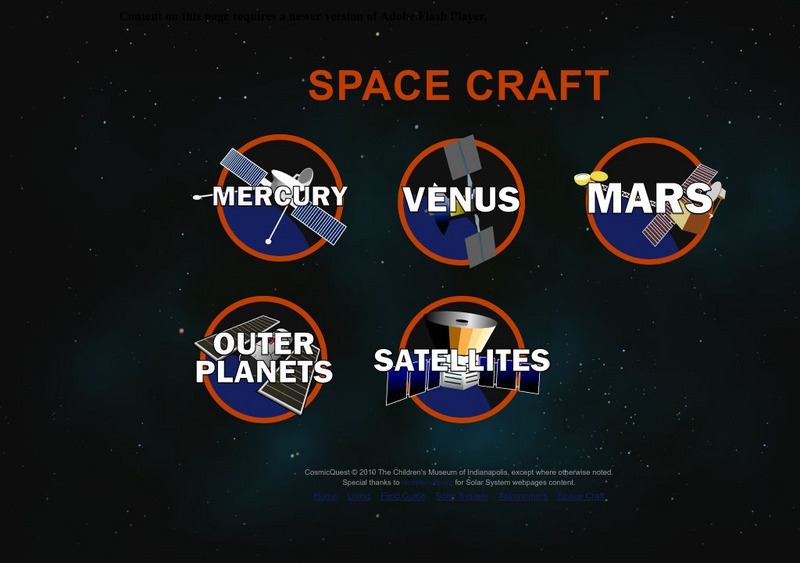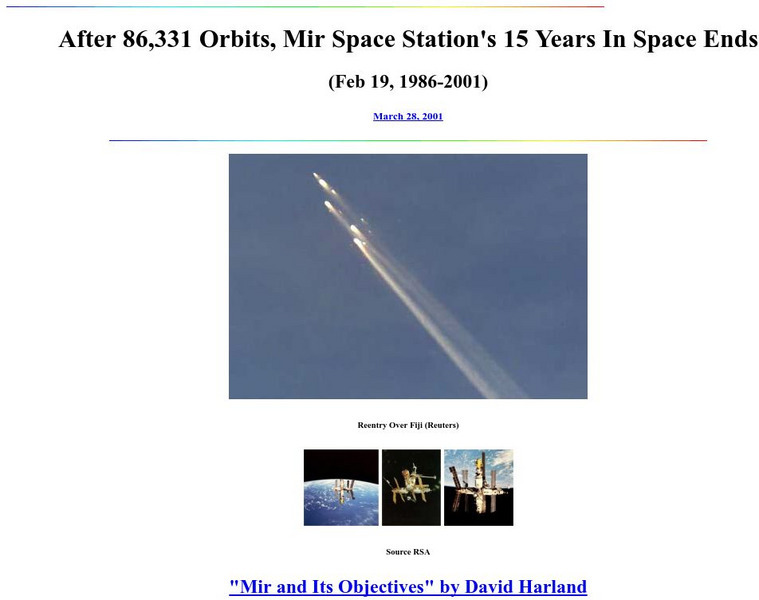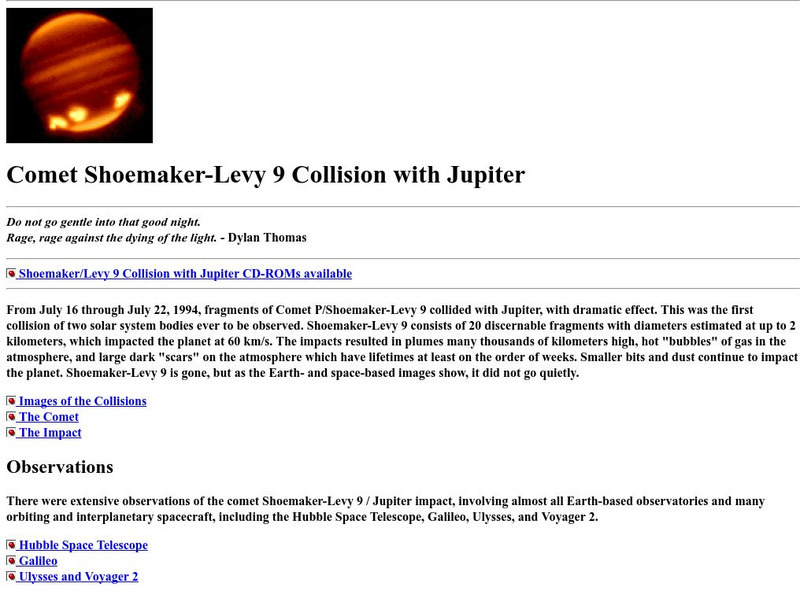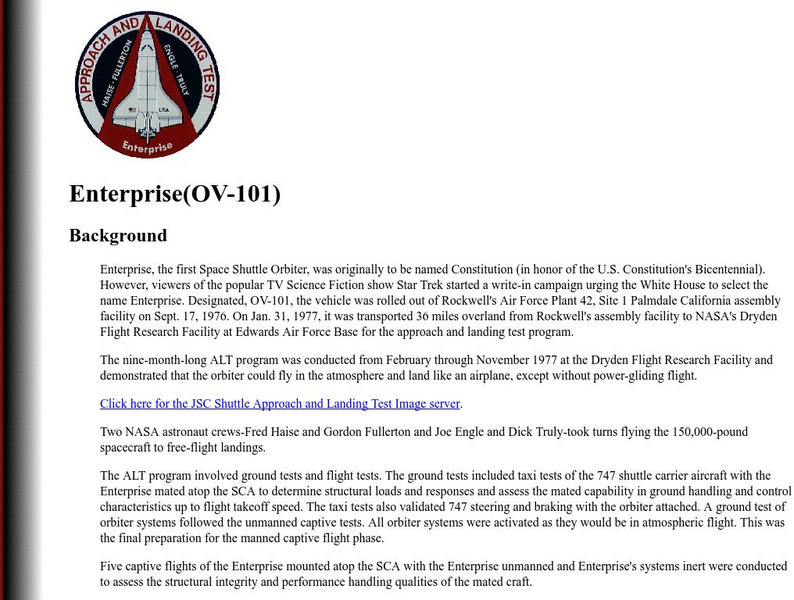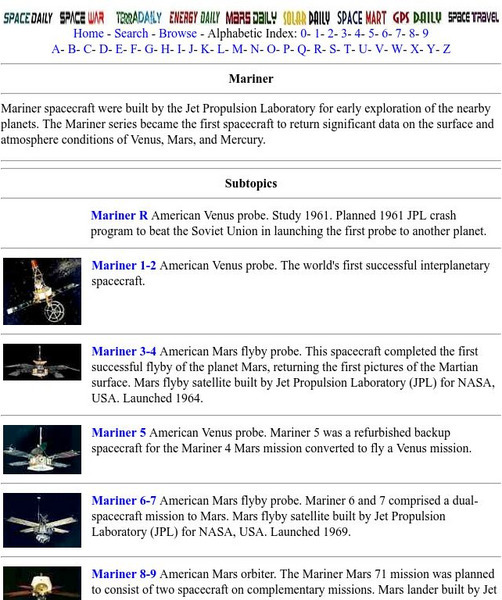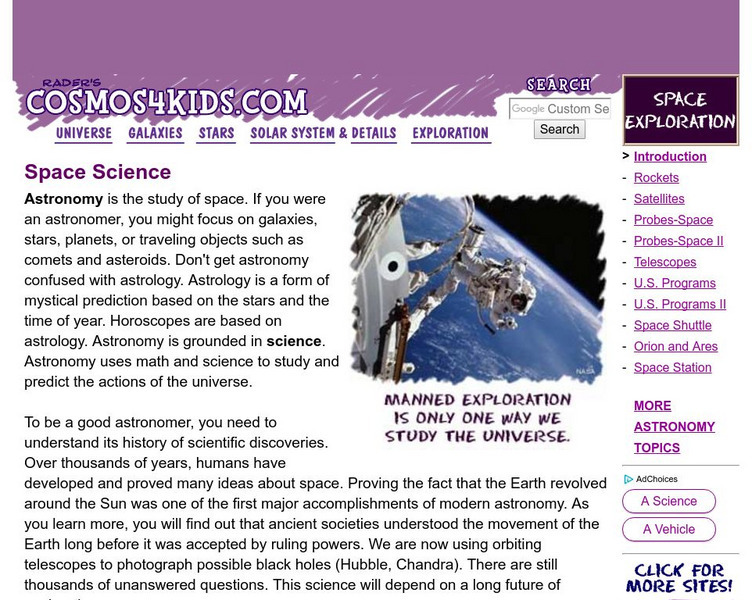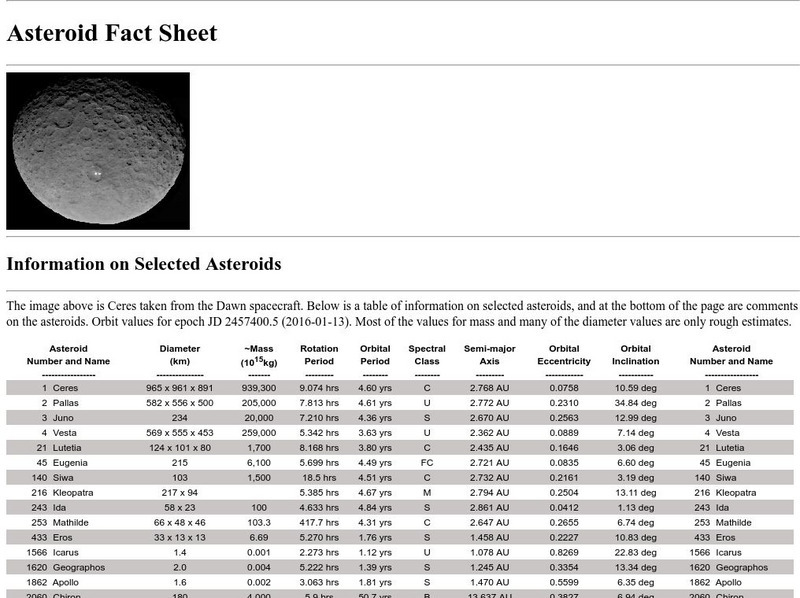Hi, what do you want to do?
Laboratory for Atmospheric and Space Physics
Looking to the Future
New Horizons set forth on a mission to Pluto in 2006. Ten years later, the spacecraft is still on its way. Here, enthusiastic scholars predict what they will be like—likes, dislikes, hobbies, etc.—when New Horizons arrives at its...
International Technology Education Association
Dampen That Drift!
The spacecraft is drifting too far off course! Two games help explain how a spacecraft can use its thrusters to maintain its position. The games have pupils be the components of vectors in order to create and counteract the...
Laboratory for Atmospheric and Space Physics
Charting the Progress of New Horizons
In 2006, New Horizons began its mission to fly to Pluto. As it continues its journey, scholars track its progress with the help of an informative website, all the while reinforcing measurement concepts with the construction of a scaled...
NASA
Touchdown
Individuals design and build a set of shock absorbers to protect their astronauts when they land. Using a limited amount of supplies, pupils build a system that will keep two large marshmallows from flying out of a cup when it lands...
Penn Museum
Penn Museum: China Gallery
Invite your learners to take a closer look at the art and mathematical function of dome buildings as designed by the ancient Romans. In the next segment of this attractive worksheet set, your young historians will then learn about...
International Technology Education Association
Pixel This!
Did the image I drew match the image you saw? By simulating a satellite and a ground station, teams of two transmit data in the form of pixels in order to recreate an image. They use four different levels of brightness, creating slightly...
NASA
On Target
NASA's LCROSS mission is dropping a probe into a lunar crater. Groups design a system to travel down a zip line and drop a marble onto a target in the classroom. The groups then modify their designs based upon testing.
Curated OER
The Planet Venus
In this worksheet on the planet Venus, students look at a picture of the planet and read accompanying facts, along with a brief paragraph.
Curated OER
Asteroids
In this worksheet on asteroids, students look at a picture asteroids and read accompanying facts, along with a brief paragraph.
National Academy of Engineering
Greatest Engineering Achievements of the 20th Century: Spacecraft
Students learn about spacecraft in the 20th century. Some topics investigated are Apollo, after Sputnik, and exploring galaxies. The resource consists of historical information, a timeline, and a personal essay by a key innovator.
Wonderville Media
Wonderville: The Space Shuttle
Before the Space Shuttle was invented, NASA, which stands for the National Aeronautics and Space Administration, used rockets to get people to space. The problem with rockets is that they can only be used one time. They wanted a better...
Children's Museum
Field Guide to the Universe: Space Craft
Pictures and descriptions of the robot spacecraft that have explored the planets and outer space since the 1960s.
Other
Visual Satellite Observer: Mir Space Station's 15 Years in Space Ends
Details of Mir's re-entry into the Earth's atmosphere after 15 years in space. Includes information on Mir's mission, configuration, and history.
Children's Museum
Children's Museum of Indianapolis: Cosmic Quest: Space Craft
Travel to other planets and even outer space, and explore various spacecraft. Get a synopsis about each of the featured planetary space probe missions.
NASA
Nasa Space Shuttle: Solid Rocket Boosters
A page describing the solid rocket boosters used on NASA's space shuttle. Physical characteristics of the booster rockets are discussed, and considerations critical to the effectiveness of the rocket engines are explained.
NASA
Nasa Space Science Data Archive:comet Collision With Jupiter
Comet collision with Jupiter with lots of pictures and some text. Links to the information about the comet, the impacts, and observations made by four different spacecraft.
NASA
Nasa Space Science Data Archive: Giotto Mission
This site from the National Space Science Data Center provides information on the Giotto mission which was designed to study Comet P/Halley. The spacecraft encountered Halley on March 13, 1986 and approached to within 600 km. This page...
Ducksters
Ducksters: Astronomy for Kids: Space Exploration Timeline
Kids learn about the timeline of the history of space exploration including early astronomy, astronauts, spacecraft, planets, and the Moon.
Other
Encyclopedia Astronautica: Mariner
This web page contains information about Mariner I and Mariner II. The page explains how Mariner II was the first spacecraft to successfully fly by another planet. Includes detailed chronology of the Mariner missions.
CK-12 Foundation
Ck 12: Earth Science: Satellites, Shuttles, and Space Stations Study Guide
[Free Registration/Login may be required to access all resource tools.] This study guide provides a brief overview of satellites, shuttles, rockets, and space stations. Includes a few questions to check for understanding.
Cosmos 4 kids
Cosmos4 kids.com: Exploration
Space can be explored in many different ways. Read about space exploration and click on the topics on the right margin to find out how man finds out about his universe.
NASA
Nasa Space Science Data Archive: Asteroid Fact Sheet
This asteroid fact sheet, supplied by the National Space Science Data Center, provides a table of information on selected asteroids, complete with commentary when appropriate.
NASA
Nasa Space Science Data Archive: Magellan Mission to Venus
Detailed information about the Magellan Mission to Venus with images of major surface features and two images of the spacecraft.
Other popular searches
- Apollo Spacecraft
- Space Shuttle Challenger
- Space Shuttle Flight Path
- Us Space Shuttle
- Space Shuttle Flight
- Space Shuttle Sequence
- History of Space Shuttle
- Space Shuttle O Ring Failure
- Scavenger Hunt Space Shuttle
- Challenger Spaceship
- Mars Spacecraft
- Spacecraft Design Mars
















